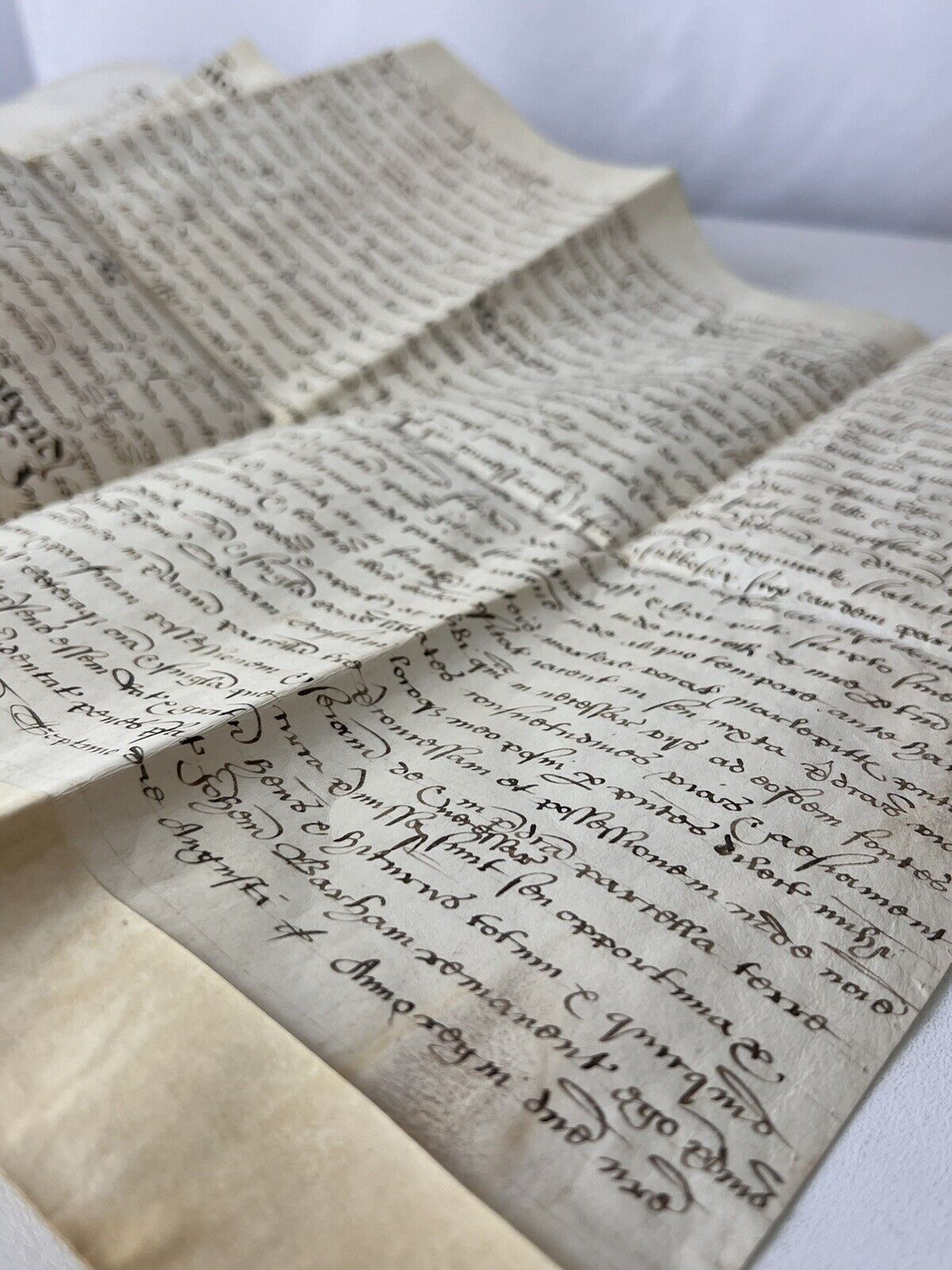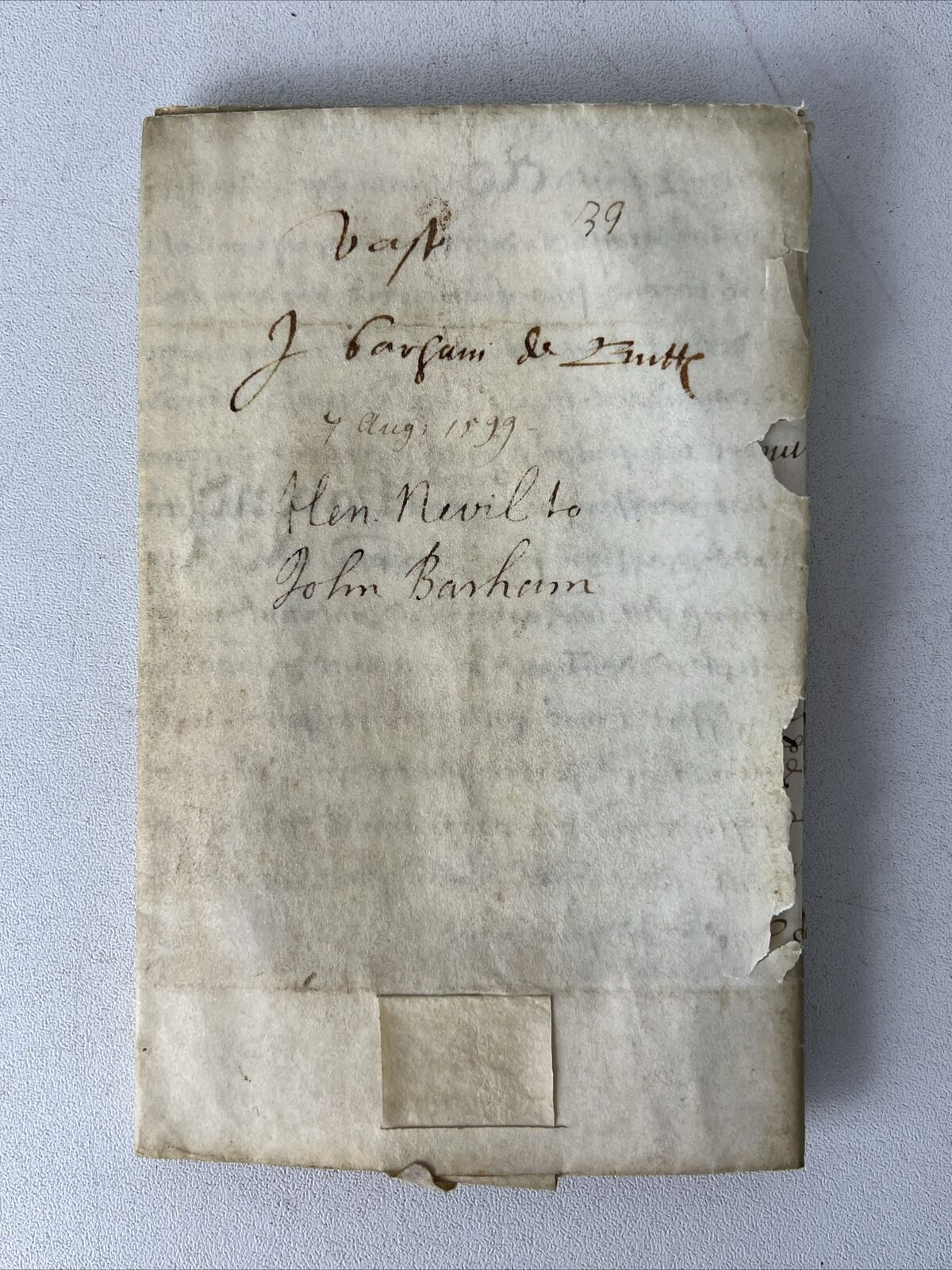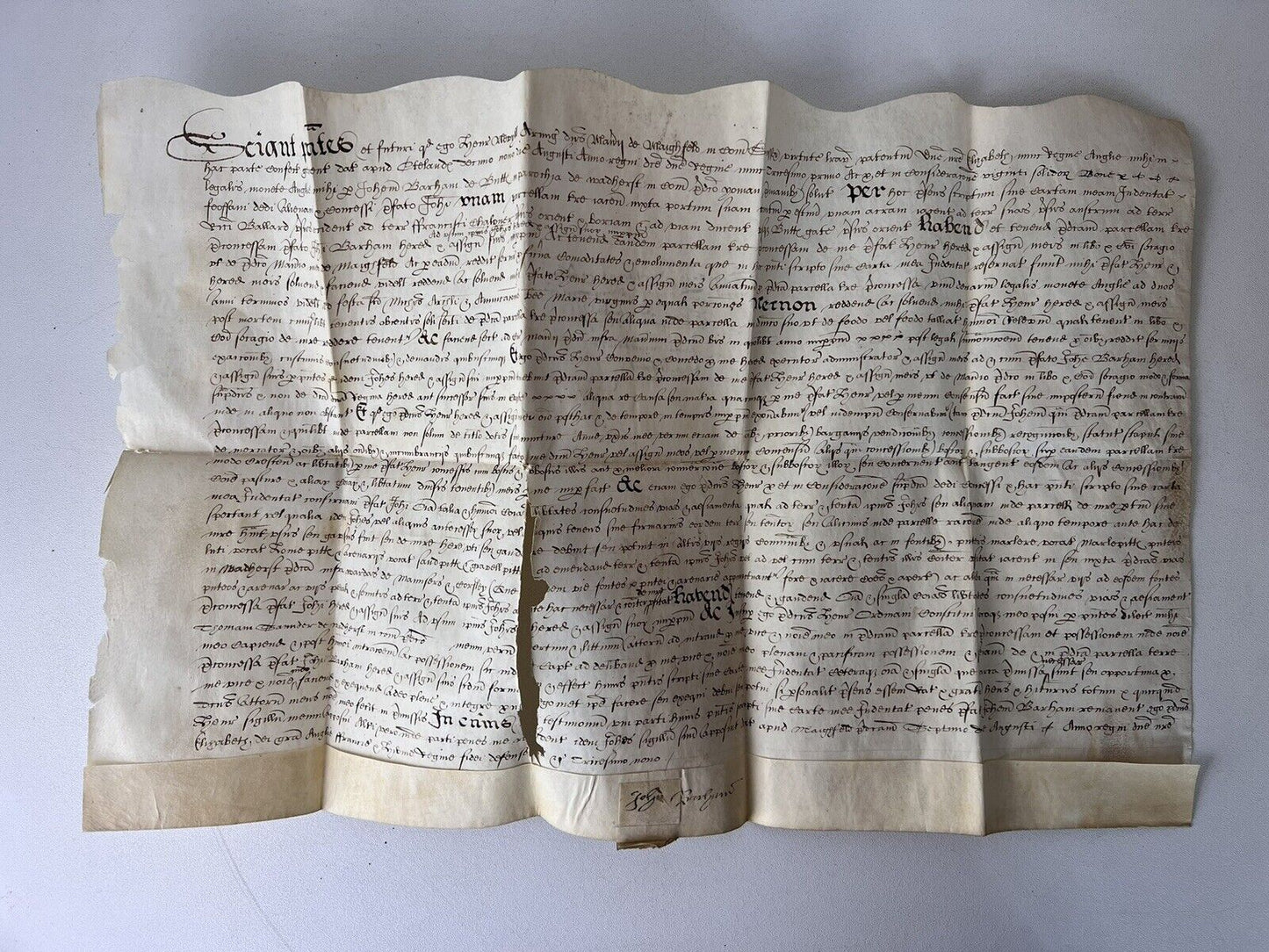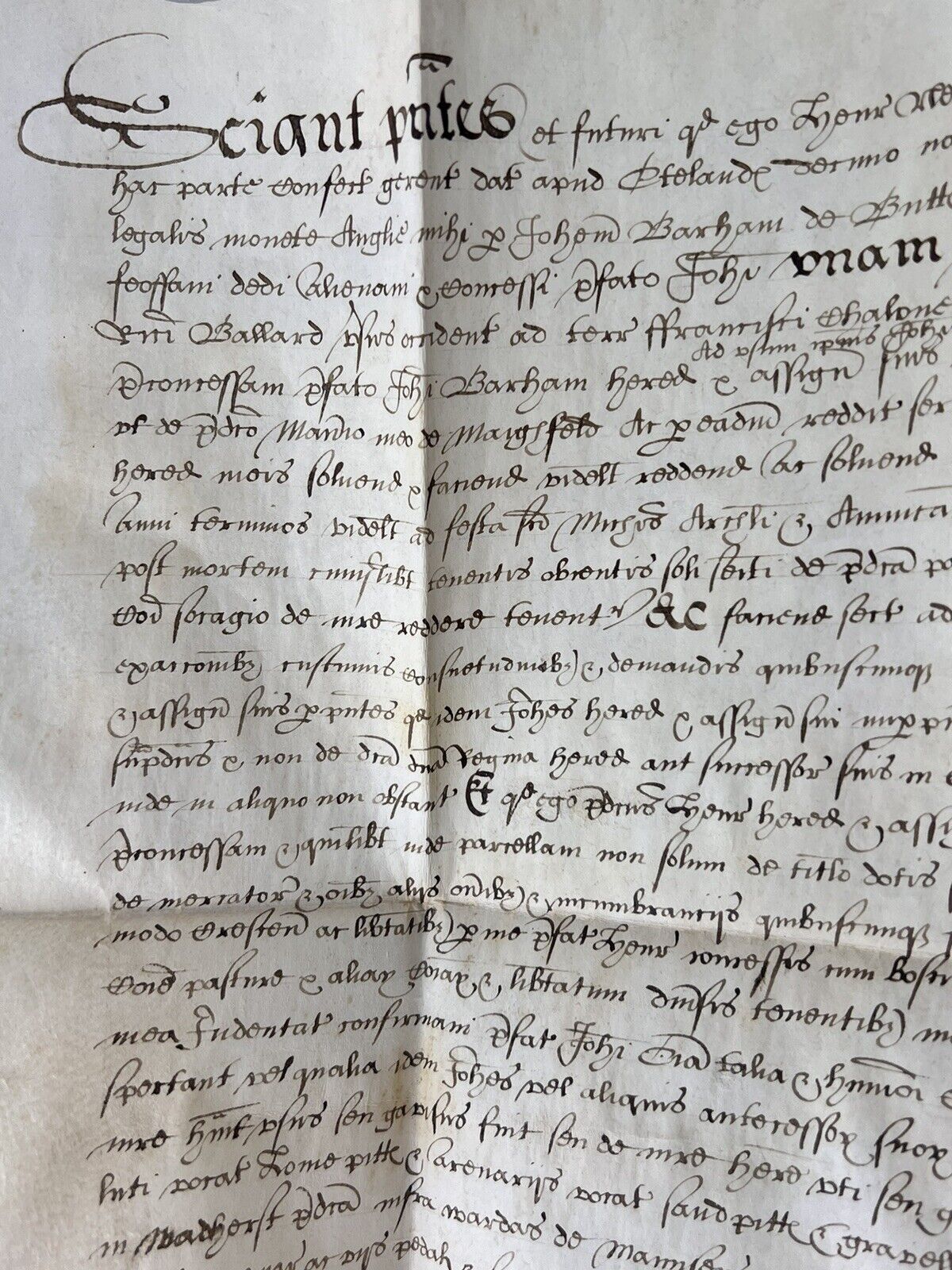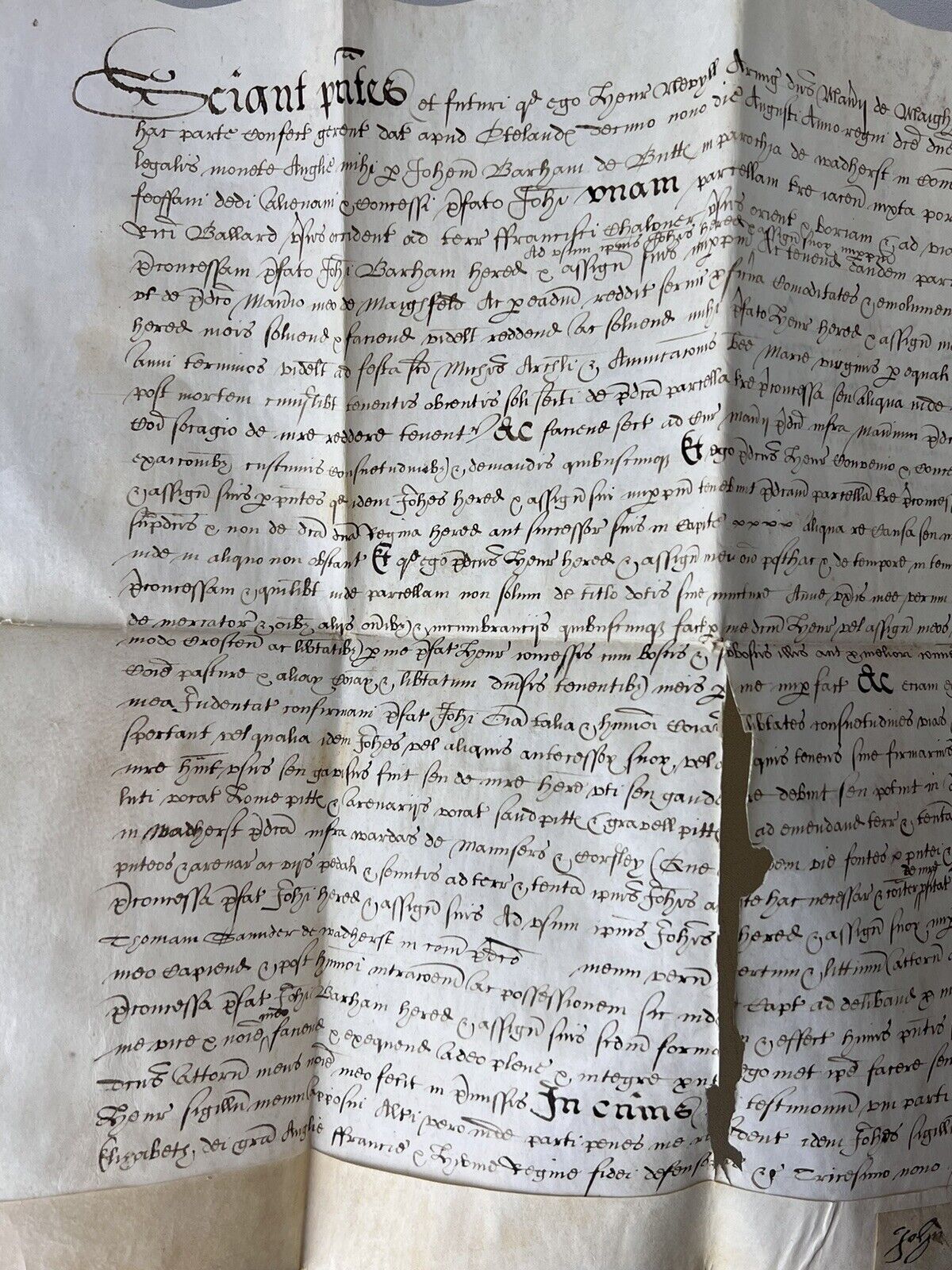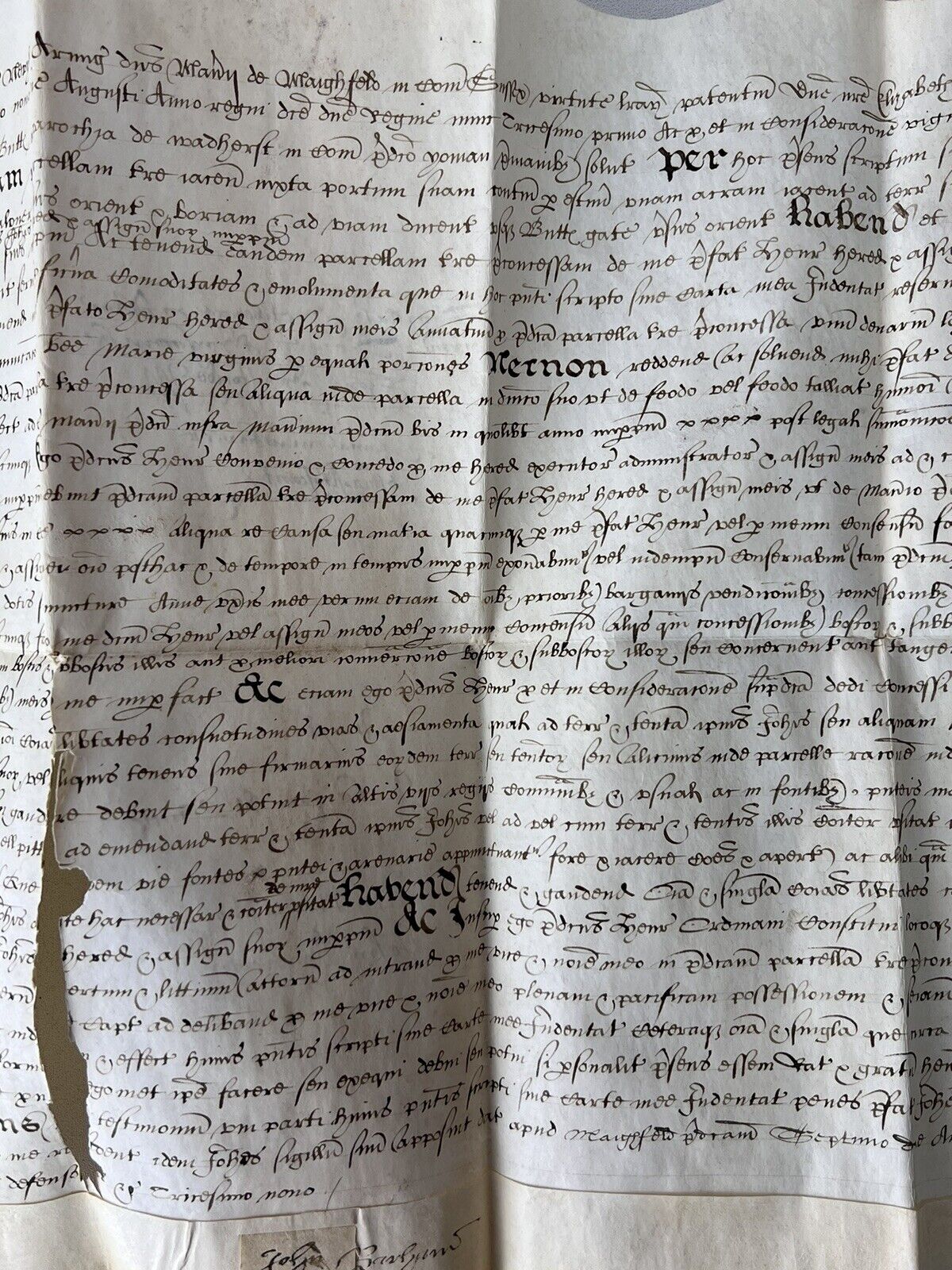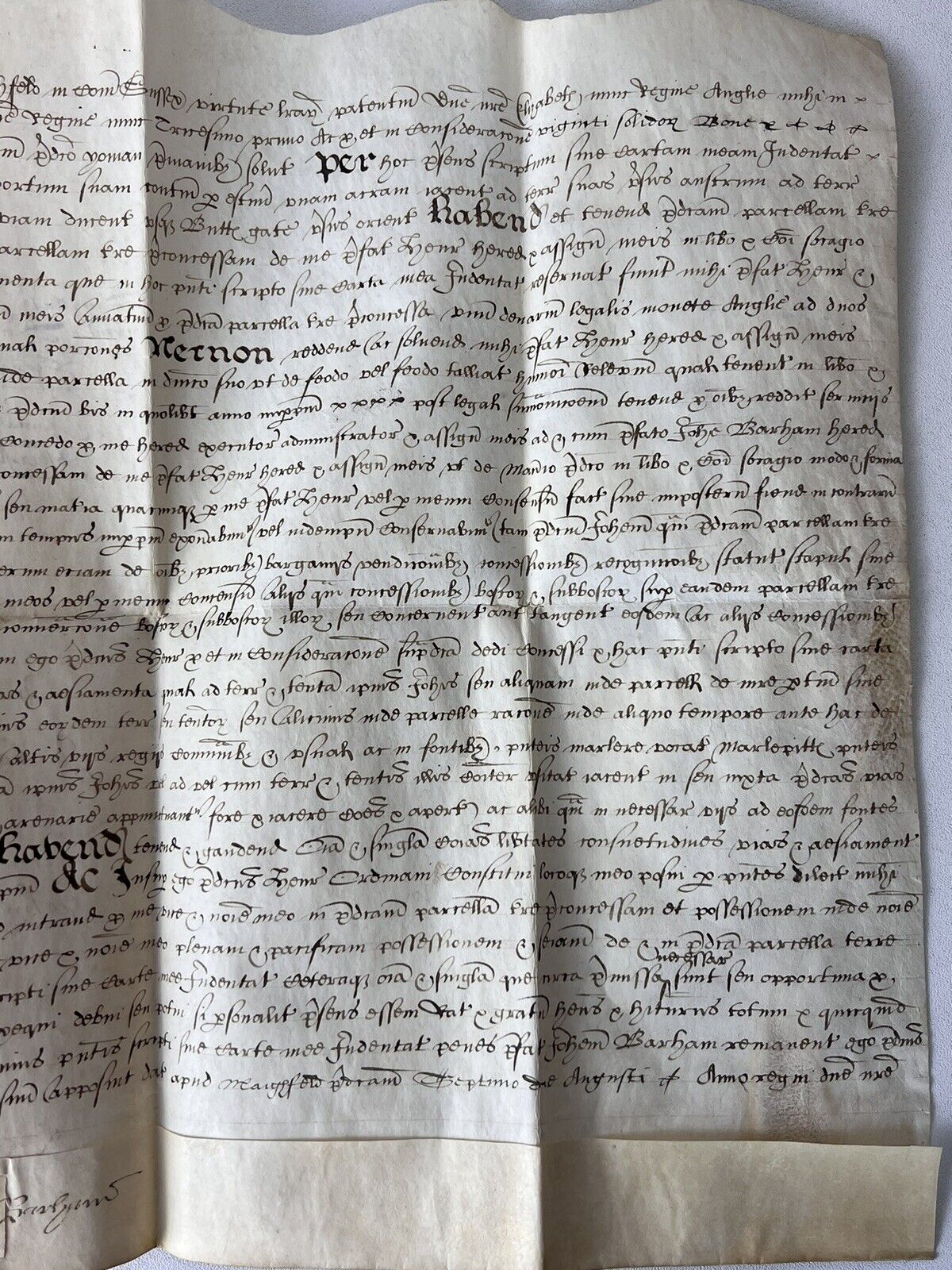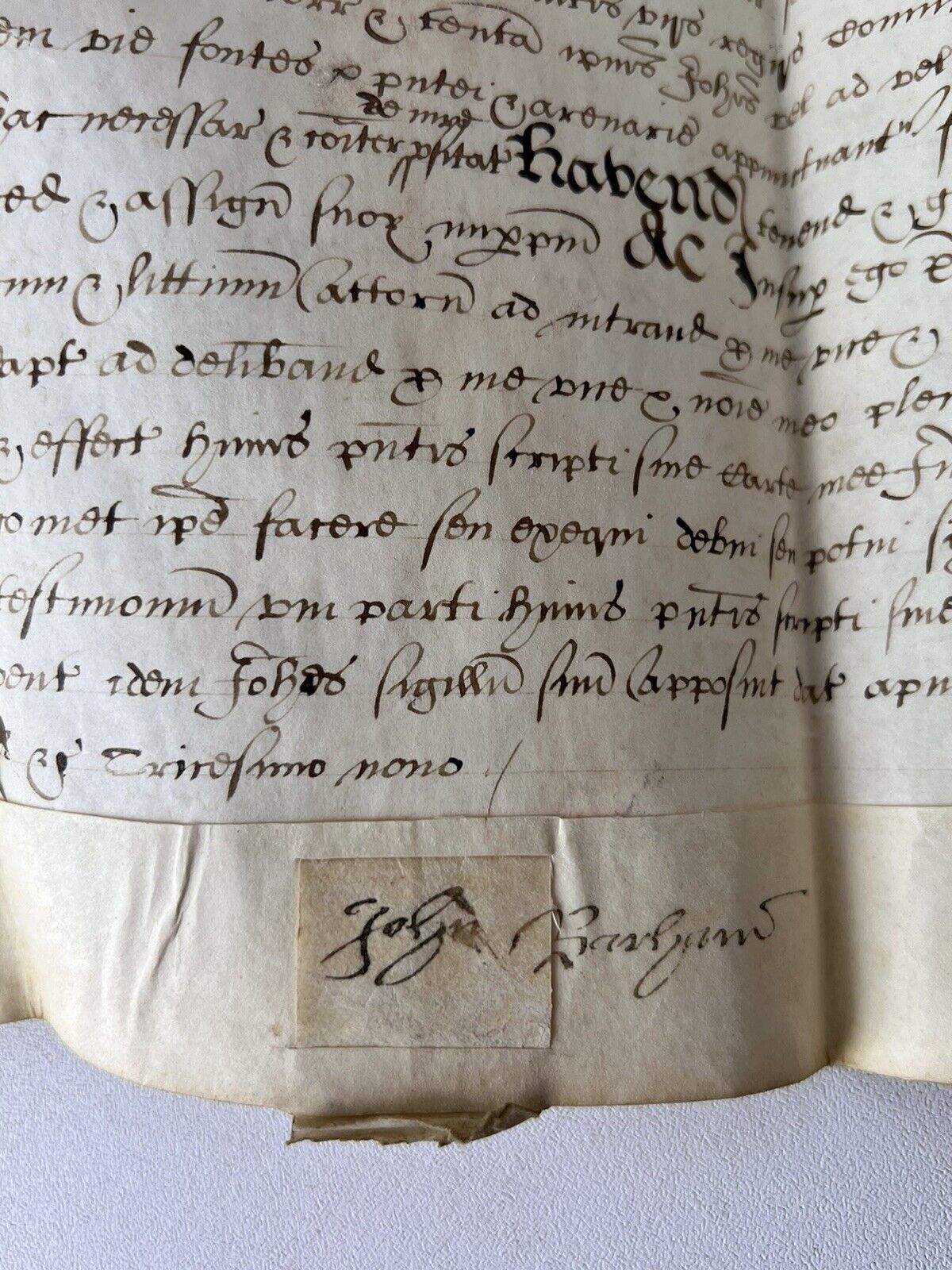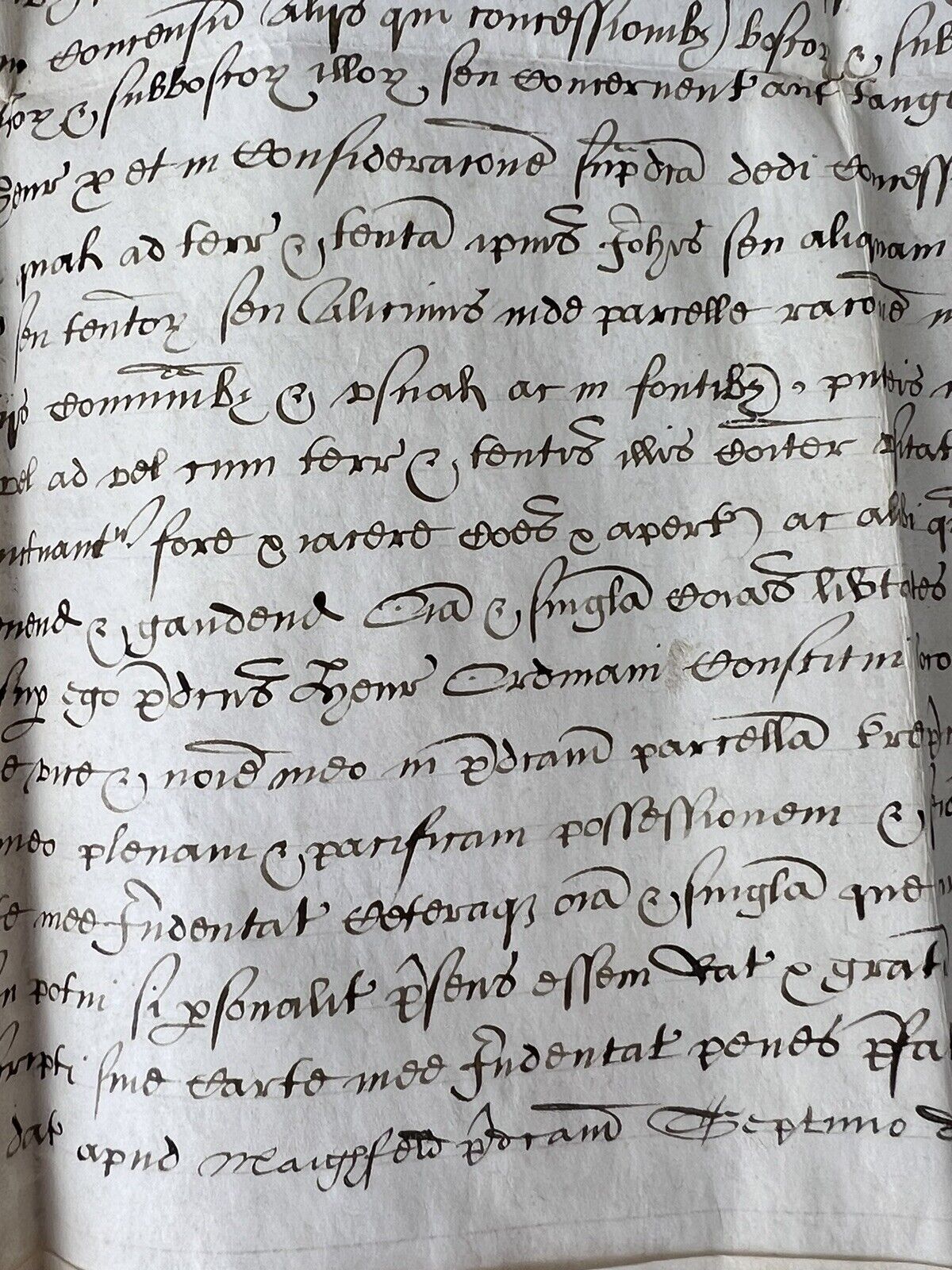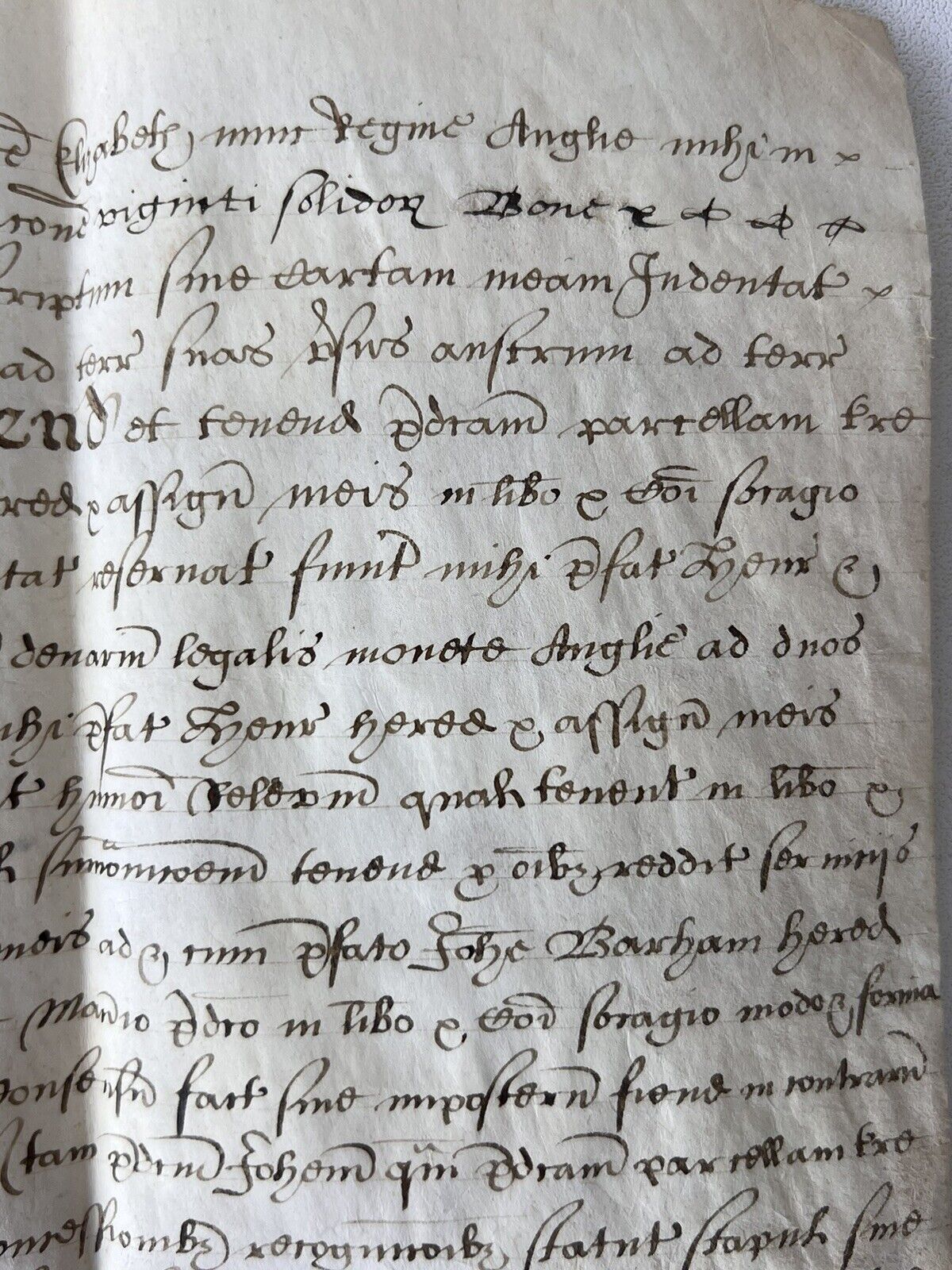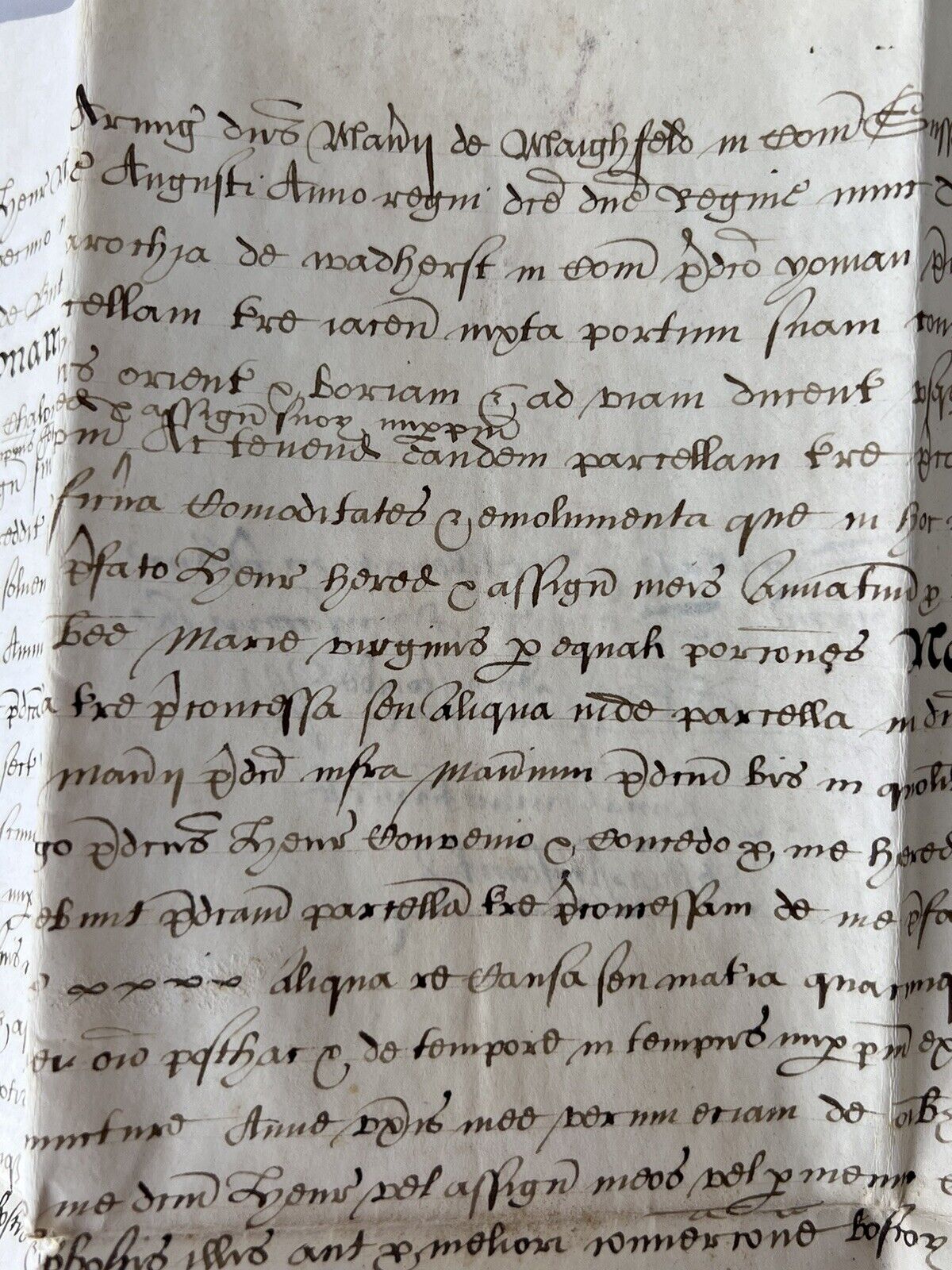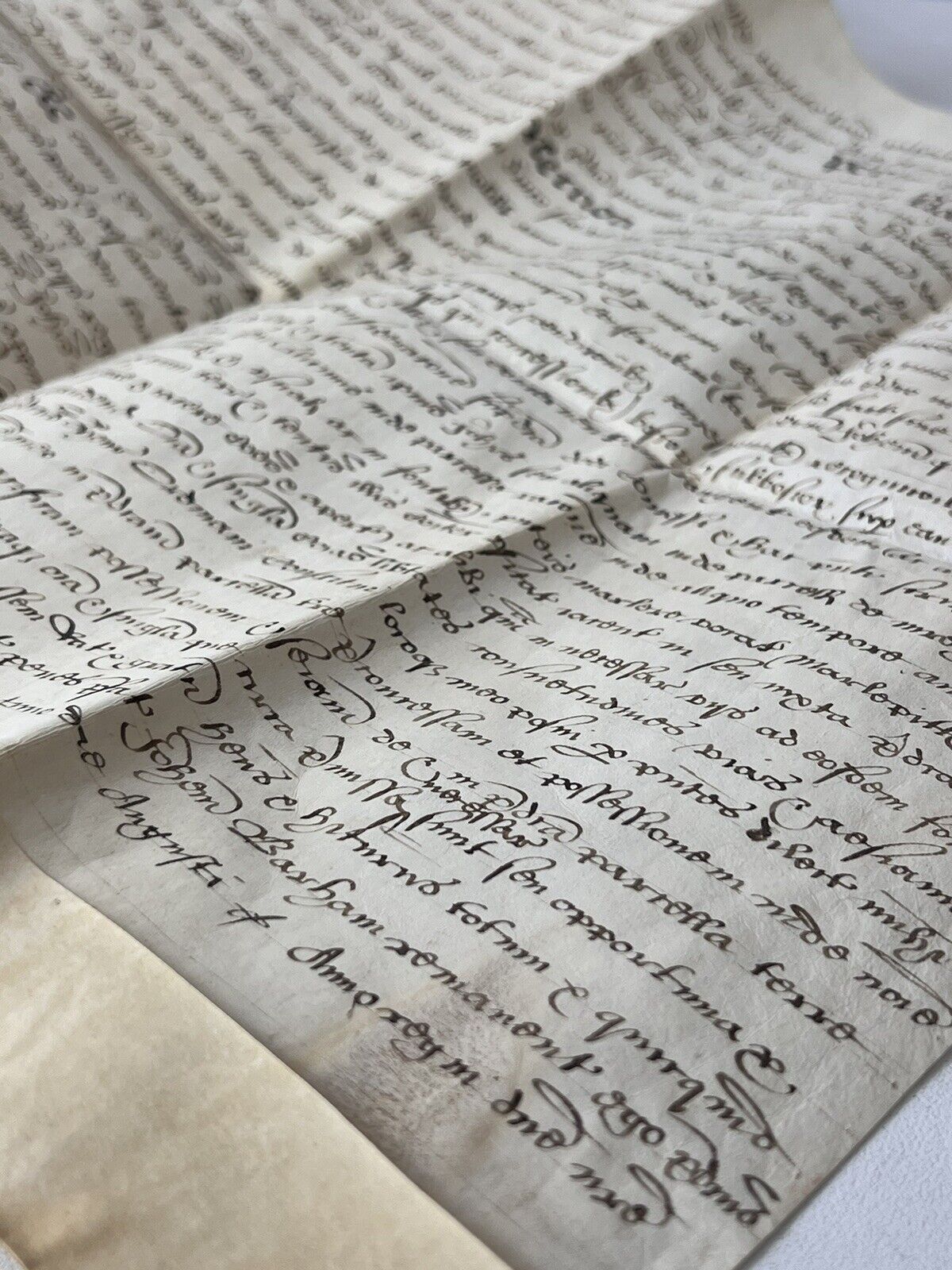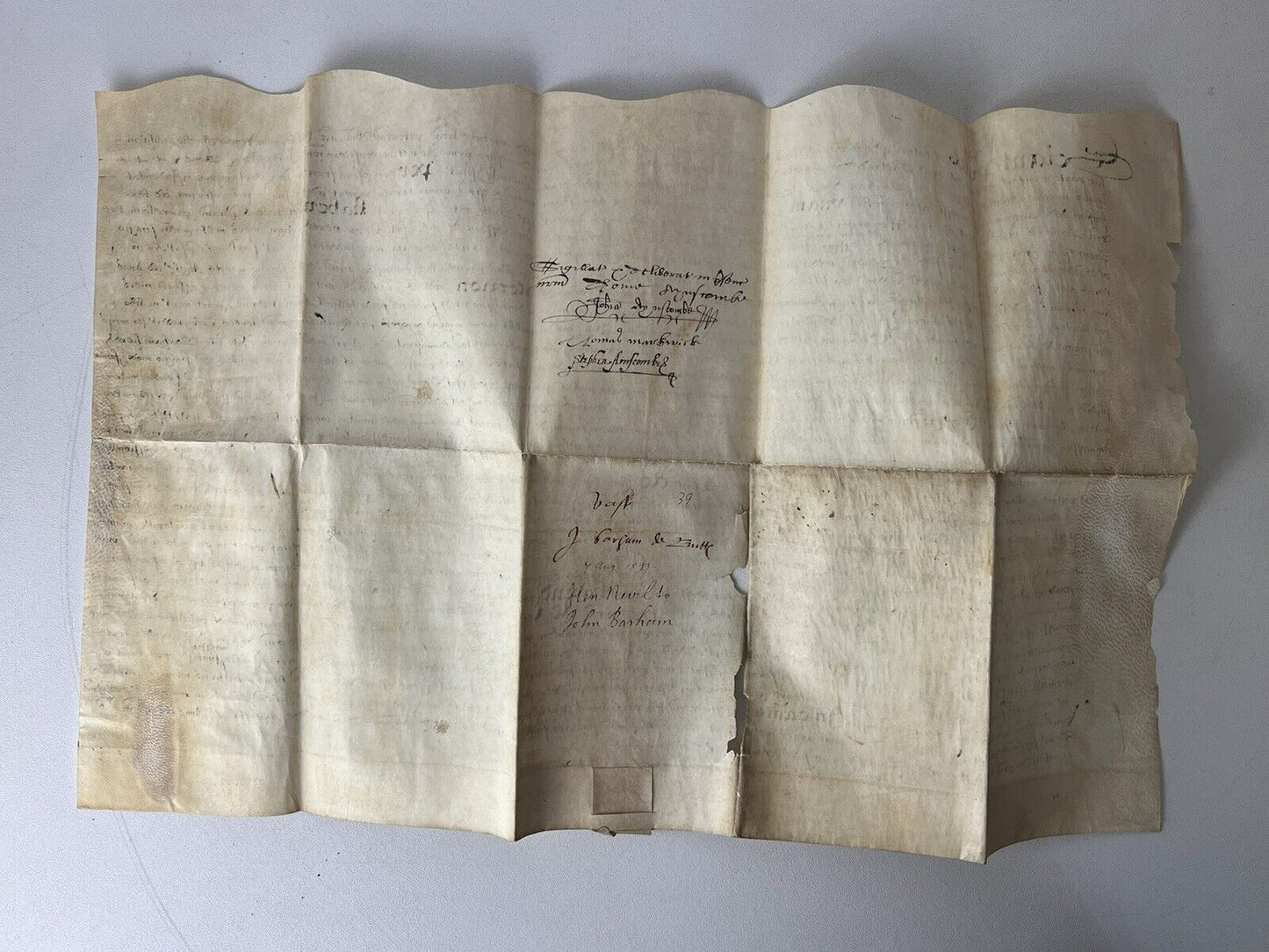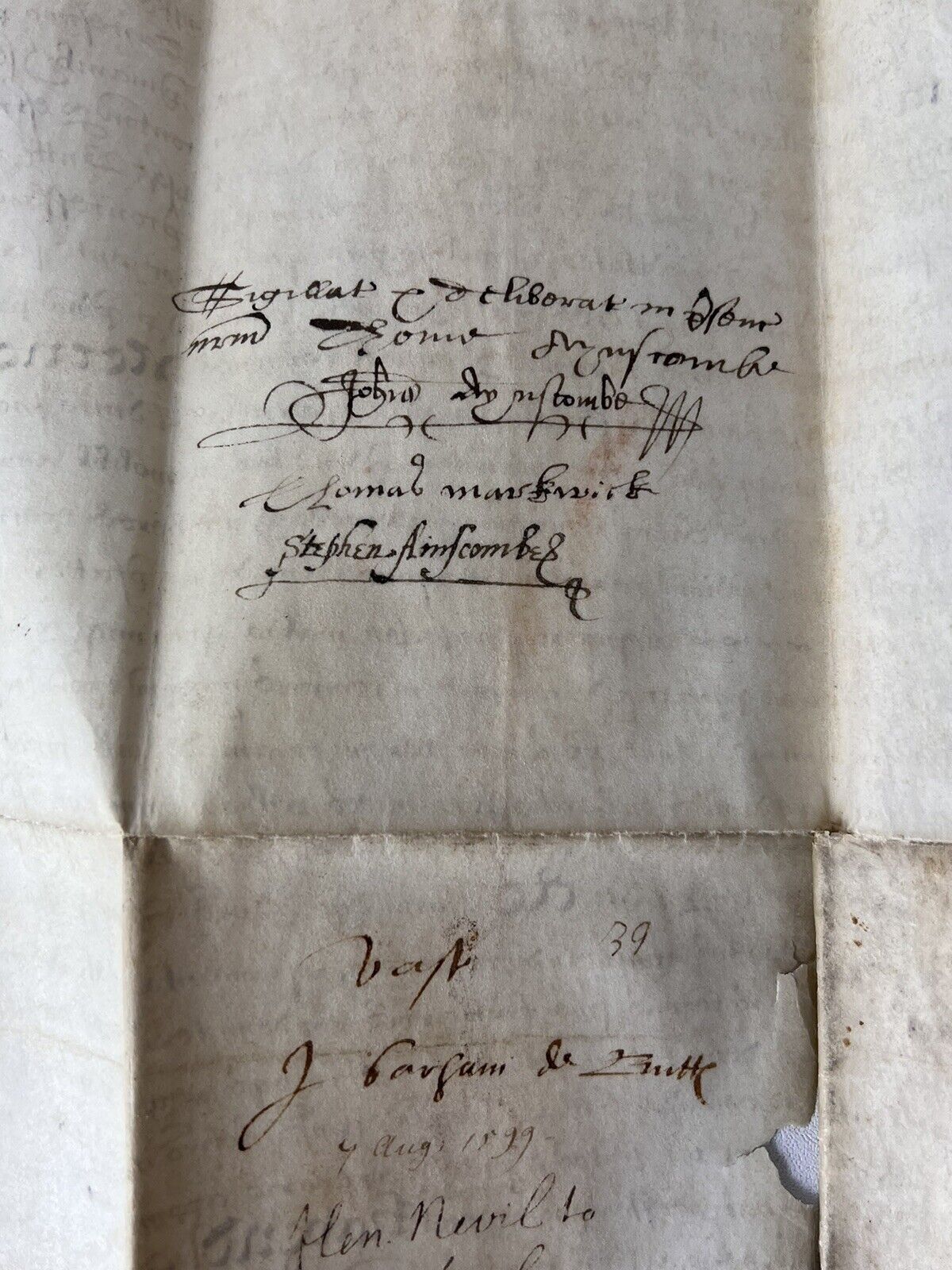William Shakespeare Associated Vellum Manuscript Dated 1599
William Shakespeare Associated Vellum Manuscript Dated 1599
Couldn't load pickup availability
A William Shakespeare Associated Document Written on Vellum, Dated 7th August 1599.
-------------------
Documents associated with William Shakespeare are incredibly rare. Very few have appeared for sale throughout history, with the vast majority of the very few examples extant preserved in institutional collections.
This document is written from Sir Henry Neville to John Barham as written on the verso "7 Aug 1599. Hen Nevil to John Barham". It is written in a typical Elizabethan secretary hand as one might expect for the period.
-------------------
THE ASSOCIATION TO WILLIAM SHAKESPEARE:
Sir Henry Neville (1564-1615) is one of the most promising candidates put forward in the theories that William Shakespeare is just a pseudonym and his works were written by others. Aside from the compelling case for him as the 'real' William Shakespeare, he is also directly connected to many of Shakespeare's plays with many of the Neville family being characters in the plays, as well as being well connected to the literary circle of Shakespeare, including Francis Bacon, Beaumont & Fletcher, Ben Jonson, the printers of Shakespeare's First Folio and Sonnets, and the person of 'William Shakespeare'.
-------------------
Evidence supporting Neville as Shakespeare:
Direct Testimonies:
Reverend Thomas Vicars, Neville's son-in-law, referred to "Shake-speare" as a pseudonym in the early 17th century. Additionally, a document defending Richard III was dedicated to Neville, suggesting a personal connection between him and the author.
Contemporary References:
Neville's association with Gresham College, where Ben Jonson was connected, and his friendship with Henry Wriothesley, 3rd Earl of Southampton, support his potential involvement as Shakespeare. There are also contemporary documents where Henry Neville's name appears alongside William Shakespeare's (and Francis Bacon and others) such as the Northumberland Manuscript, the Thomas More MS, the Encomium of Richard III, and the testimony of Thomas Vicars.
Worsley MSS 47 (held in the Lincoln Archives) is a copy of Leicester’s Commonwealth and is in Neville’s own handwriting. Dated c.1585, it predates the Shakespeare history plays and is a possible source for them. There is evidence of a bias favouring members of the Neville family in the history plays (Bradbeer & Casson, 2015).
John Fletcher and Francis Beaumont gave a play manuscript (A King and No King) to Neville before Shakespeare started co-writing with Fletcher. They all attended the Mermaid Club (Gayley, 1914). In 1615 Beaumont wrote what may be a cryptic reference to Neville’s funeral “at Windsor” in the same sentence as a reference to Shakespeare (Rubinstein, 2012: 146).
Parallels with Shakespeare's Works:
Neville's life events align closely with the evolution of Shakespeare's writing style, particularly the shift towards darker and more complex themes around 1601.
Scholars have noted the sudden change in Shakespeare's work during this period, coinciding with Neville's traumatic imprisonment experience, but there is no explanation for this shift with the 'William Shakespeare' figure.
Neville's Letters:
In his letters. Neville used Shakespearean vocabulary (Sawyer, 1725; Casson & Rubinstein, 2016: 115, 131). Three poems by Neville have been discovered, one a signed manuscript. Ben Jonson, John Chamber. and George Carleton referred to the Muses in relation to Neville.
Five independent researchers have found the name “Henry Neville” encoded in various ways in the dedication to the 1609 Shake-speares Sonnets and in the sonnets themselves. This was how Neville’s authorship was discovered (James, 2008; Leyland & Goding, 2018). Neville used similar codes in his diplomatic letters.
Family Connections:
On his father's side, Neville was directly descended from Ralph de Neville, 1st Earl of Westmoreland, who appears on stage in Henry IV and Henry V. Ralph's son, the 2nd Earl, is on stage in Henry VI part 3, and many other Neville family members appear in the Shakespeare history plays.
Library Annotations:
Neville's library contains meticulously annotated books, many of which are directly relevant to themes, characters, and settings in Shakespeare's plays. Many of the books in Neville's library are annotated with notes relevant to Shakespeare plays, including "The Comedy of Errors," "The Taming of The Shrew," "Titus Andronicus," "Romeo and Juliet," "Much Ado About Nothing," "Julius Caesar," "Henry V," "Twelfth Night," "Hamlet," "Macbeth," "Coriolanus," "Anthony and Cleopatra," "Pericles," "Cymbeline," and "The Winter’s Tale." Other unmarked books in the Neville library serve as sources for "The Two Gentlemen of Verona," "A Midsummer Night’s Dream," and "As You Like It."
The volumes encompass a wide range of authors, including Ovid, Plautus, Horace, Tacitus, Appian, Petrarch, Ariosto, Erasmus, de Montemayor, and Castiglione. One notable example is a 1580 edition of Orlando Furioso by Ariosto, printed in Venice, which is a recognised source for "Much Ado About Nothing." Given Neville's presence in Venice in 1581, it's reasonable to assume that he purchased the book there and brought it back to England. The book contains numerous underlined passages, indicating thorough reading. Cairncross (1976) suggests that Shakespeare read Orlando Furioso in Italian, further supporting the connection between Neville's annotations and Shakespeare's works.
Life Experiences and Works:
Neville's extensive life experiences, spanning diplomacy, politics, and travel, correspond with the diverse range of settings and subjects depicted in Shakespeare's plays.
The timing of Neville's experiences often aligns with the composition of specific Shakespearean works, providing a plausible explanation for the thematic richness and authenticity found in the plays.
Neville’s knowledge of falconry and hunting, forestry, farming, astronomy, law, politics, geography (including France, Italy, Windsor), languages, ancient Greek theatre, Roman history, poetry, music, the recruitment of soldiers, ships and sea voyages, munitions, cannon, metallurgy, and lapidiary match what we find in Shakespeare’s works (Casson, Rubinstein, and Ewald, 2018).
His life experiences can explain the development of Shakespeare’s writing. For example, many early plays are set in places in Italy which he visited during his travel, Venice, Padua, and Verona; Henry V takes us to France with scenes in French at a time that Neville went as ambassador to France and wrote letters in French; Measure for Measure with scenes in prison and the threat of execution was written at the same time that Neville was recovering from the trauma of imprisonment with the ever-present threat of execution; the title of the next play, All’s Well That Ends Well, could reflect the celebratory mood Neville might have felt after his release; Coriolanus and Timon of Athens are meditations on Jacobean politics in which Neville was deeply involved; The Winter’s Tale, with its father-daughter themes and climactic wedding feast, was written the year two of his daughters were married.
Literary and Manuscript Evidence:
Comparisons between Neville's handwriting and known manuscripts attributed to Shakespeare, such as Hand D, reveal striking similarities, indicating a possible authorial connection. Furthermore, Neville's associations with prominent literary figures like John Fletcher and Francis Beaumont, along with his ownership of relevant manuscripts and annotated texts, strengthen the case for his authorship.
Personal Connections and Patronage:
Neville's close ties with influential individuals within Shakespeare's literary circle, including Ben Jonson and the Herbert family, suggest a network of support and recognition within the Elizabethan and Jacobean literary community.
Posthumous patronage from the Herbert family, particularly the Earls of Pembroke, underscores Neville's significance and influence in both literary and aristocratic circles.
Secrecy and Discretion:
Neville's discreet nature, as evidenced by his reluctance to reveal authorship of political documents and his use of coded language, mirrors the enigmatic qualities and cryptic references found throughout Shakespeare's works.
This penchant for secrecy suggests a possible parallel between Neville's writing style and the mysterious elements often present in Shakespearean texts.
-------------------
The Document:
Signed on the reverse reading 'Hen Nevil to John Barham' and dated '7 aug 1599', with some other manuscript names provided, perhaps of later owners of this manuscript, from the Ainscombe family, with a line which reads 'a formal manuscript'. The document is signed at the bottom 'John Barham' on the recto, and clearly would have had another corresponding document at the top for which we can now see the cutaway as typical for Elizabethan documents.
-------------------
Size: 104 x 166 mm (folded)
Size: 503 x 323 mm (unfolded)
Condition:
Some wear at edges, chipped with minor losses, but none to text at edges. The document has a thin vertical tear extending across approximately half of the written area (approx 130 mm) which includes small losses to the text along this. The document may have originally had a wax seal connected at the bottom, but this is now clearly lacking if one were ever present. It is written in an extraordinarily neat hand by a clearly learned individual. The document remains generally bright throughout with small areas of discolouration.
